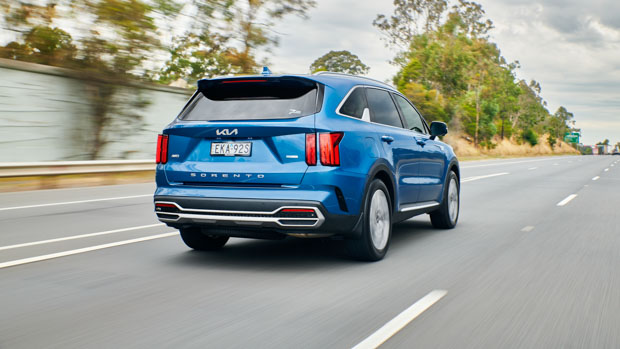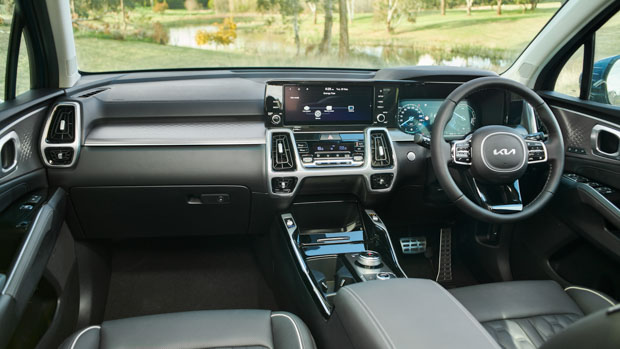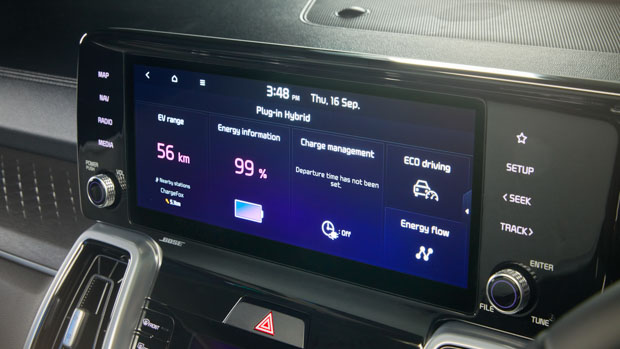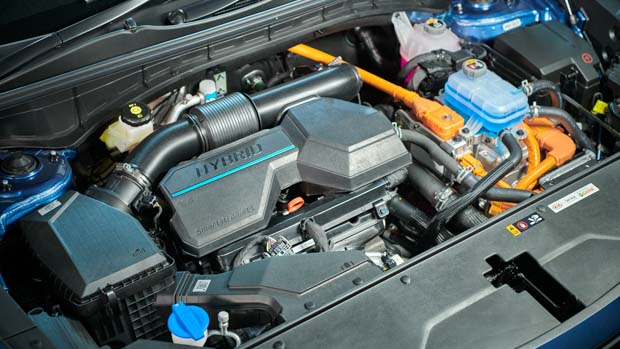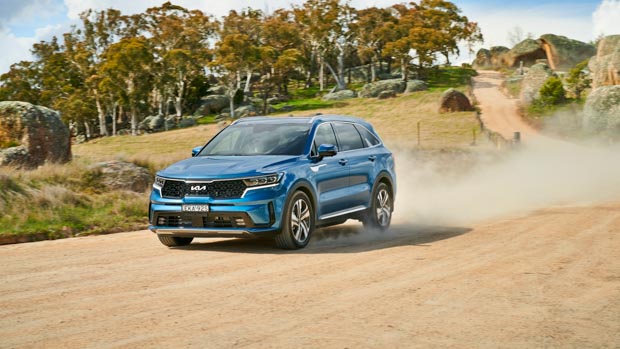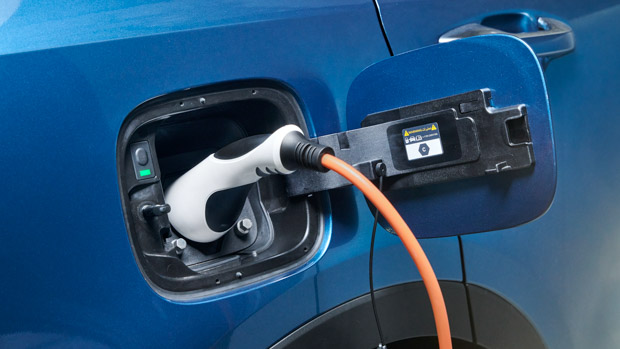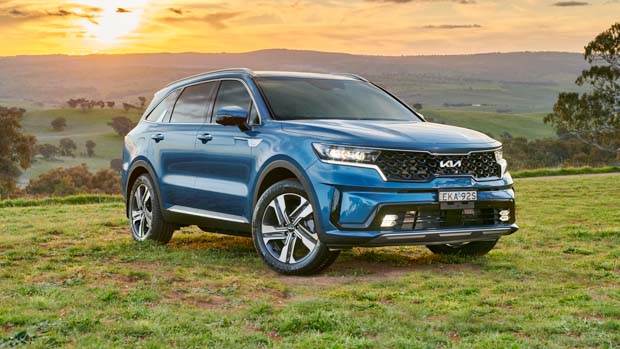-
Car Reviews
- All reviews
- Midsize SUVs
- Small cars
- Utes
- Small SUVs
- Large SUVs
- Large cars
- Sports SUVs
- Sports cars
- Vans
Latest reviews
- Car News
-
Car Comparisons
Latest comparisons
- Chasing Deals
Arriving in a single, top-spec grade, the flagship Sorento has a turbo petrol engine, a plug, and 56km of electric range.
The Kia Sorento plug-in hybrid (PHEV) large SUV is now on sale in Australia with the electrified Sorento offered exclusively in the top-spec GT-Line trim, priced at $81,990 driveaway.
Global supply chain issues meant Kia Australia could select only one variant of Sorento to import as a plug-in hybrid and it was the popular GT-Line that got the nod. More affordable versions are expected to launch in Australia in 2022.
The primary selling point of the Sorento PHEV is its ability to travel 56 kilometres on electric power alone on the WLTP standard – but Chasing Cars testing revealed the Sorento hybrid beats this estimate and returns 60km in real-world electric driving before the engine is forced to ignite.
For those with regular access to a power point to charge the Sorento PHEV, this electric driving range could be sufficient for a driver to run their daily commute for a number of days using only electric power, which is typically far cheaper than petrol or diesel fuel in Australia.
A more traditional, self-charging Sorento Hybrid will arrive before the end of this year, offering similar fuel economy to the Toyota Kluger Hybrid without the need for regular charging – but without the all-electric driving range of the flagship plug-in hybrid system.
As the Sorento PHEV is currently only available in top-spec GT-Line trim this seven-seat family SUV includes a high level of specification with a number of luxury features included.
This begins with quilted Nappa-leather interior trim, with 14-way power adjustability for the driver’s seat and 10-way power adjustability for the front passenger. The front row receives both heated and cooled seats while the outboard second-row seats just get a heated function.
It builds on other features including a more premium leather steering wheel with a heating function and a slew of tech including a 10.25-inch centre touchscreen with wired Apple CarPlay and Android Auto.
The touchscreen works in concert with a 12-speaker Bose sound system, a wireless charger and an additional 12.3-inch display that functions as a digital instrument cluster.
Other notable features include sunshades in the second row, seven USB charging ports, a power tailgate, and a panoramic roof along with LED headlights and taillights
The Sorento PHEV carries over the five-star ANCAP safety rating from the combustion model and features an abundance of safety features as a result.
These include:
The Sorento PHEV makes use of the 1.6-litre turbocharged four-cylinder engine also found in the Cerato GT – albeit in a detuned state – and pairs this petrol-fuelled unit with a powerful electric motor sandwiched between the engine and transmission for greater efficiency, according to Kia.
When running by itself, the petrol engine develops 132kW of power and 265Nm of torque. When driving in EV-only mode, the electric motor develops 67kW/304Nm. When used in ‘Hybrid Mode’, the pair develop a maximum of 195kW and 350Nm.
Those outputs are roughly comparable with the Sorento V6 petrol FWD at 200kW/332Nm though can’t match the sheer torque of the turbo-diesel AWD at 148kW/440Nm.
As previously stated, the electric motor is capable of propelling the Sorento PHEV for 60 kilometres in our testing, drawing from a 14kWh lithium-ion polymer battery pack.
In practice, the Sorento PHEV only allows drivers to access 12kWh of the battery, displaying 15% charge remaining at the moment the system forces the combustion engine to restart.
This is so the petrol engine always has a level of electric assistance – meaning the Sorento plug-in hybrid nearly always glides off from rest on electric power, avoiding the most inefficient stage of combustion driving.
Kia says the 14kWh battery is capable of charging at speeds of up to 3.3kW using an AC charger, and can be recharged from five to 95 percent capacity in 3 hours and 25 minutes via an AC wallbox. Charging by a three-pin socket with no additional equipment takes about 7 hours.
While the Sorento is covered by Kia’s standard seven-year, unlimited-kilometre warranty the battery is limited to 150,000km – and there are no exceptions for fleet or delivery drivers.
When testing in combined conditions, the Sorento PHEV has a claimed fuel consumption of 1.6L/100km, which is significantly lower than the diesel and petrol options, rated at 6.1L/100km and 9.7L/100km respectively.
Chasing Cars fuel economy testing for the Sorento yielded the aforementioned 60km electric driving result, but also revealed that once the engine is forced to come into play when the battery reaches 15%, the Sorento uses between 6.6-7.5L/100km in combined driving.
Buyers with towing in mind should note the Sorento PHEV has a lower braked towing capacity of 1350kg, compared to 2000kg for the petrol and diesel models.
Debuting on the Sorento PHEV is ‘Terrain Mode’, which allows drivers to switch between mud, snow and sand modes that tweak the engine output and driving aids suit the conditions.
The Sorento PHEV is now on sale in Australia and you can watch the full review over on our YouTube channel.
All prices listed are the estimated driveaway prices.
Latest news
About Chasing cars
Chasing Cars reviews are 100% independent.
Because we are powered by Budget Direct Insurance, we don’t receive advertising or sales revenue from car manufacturers.
We’re truly independent – giving you Australia’s best car reviews.
